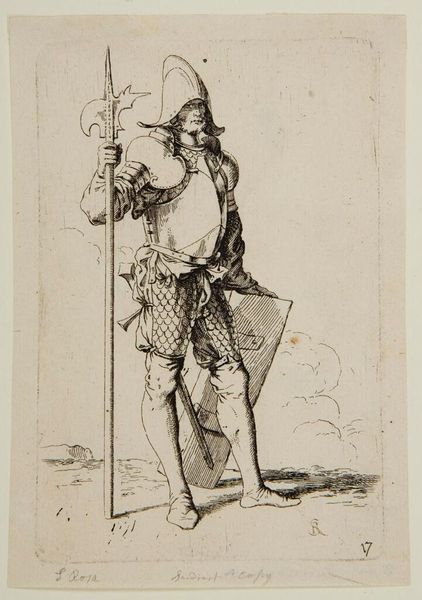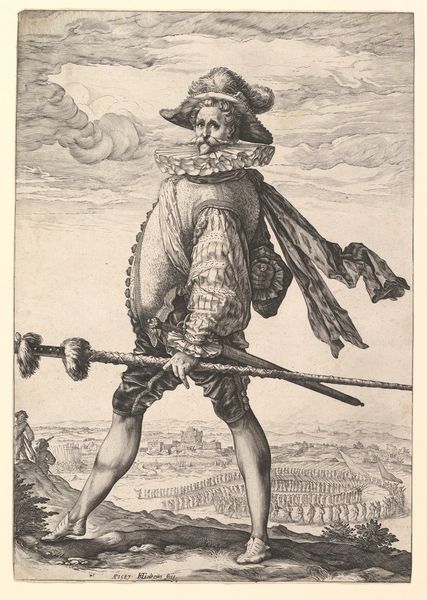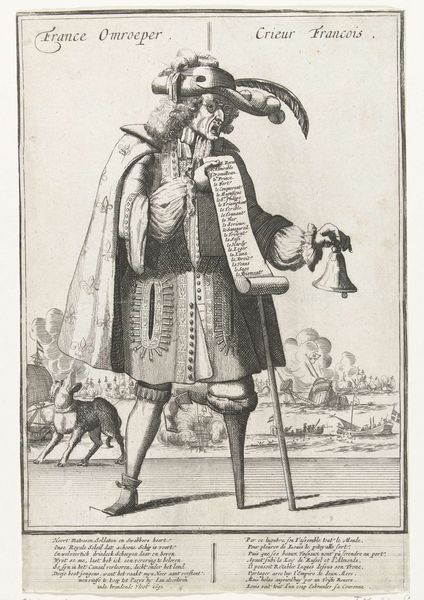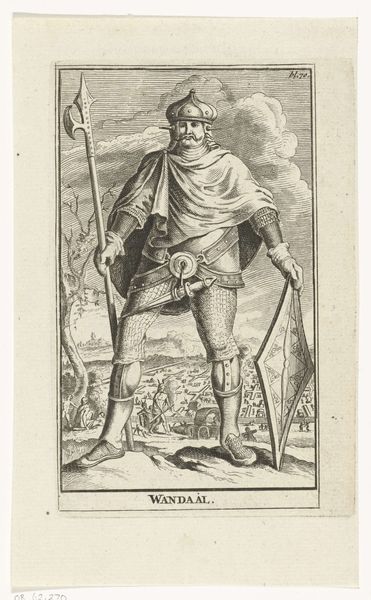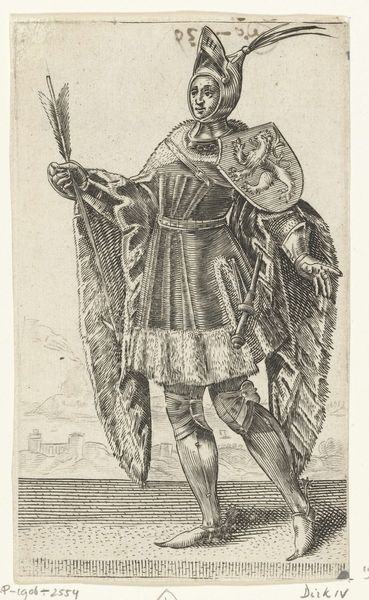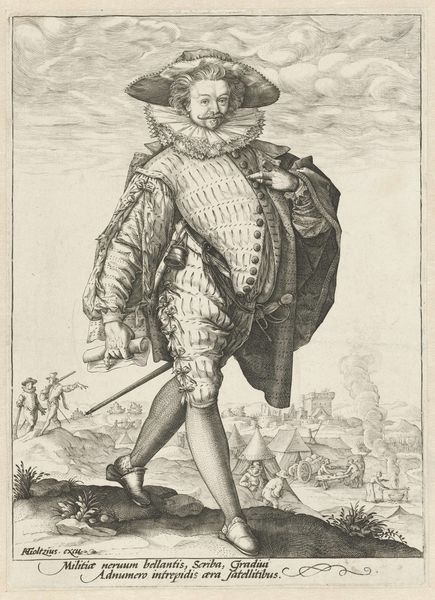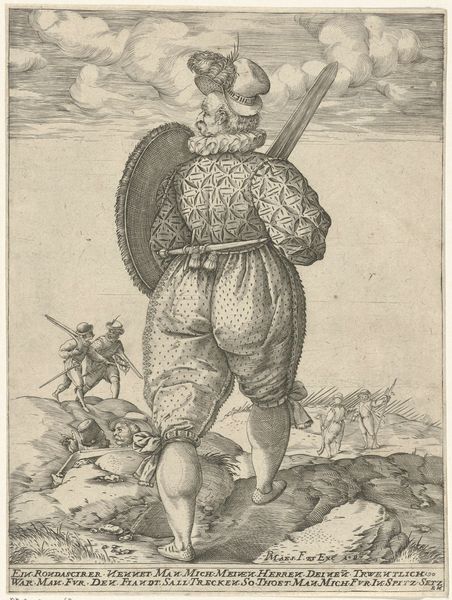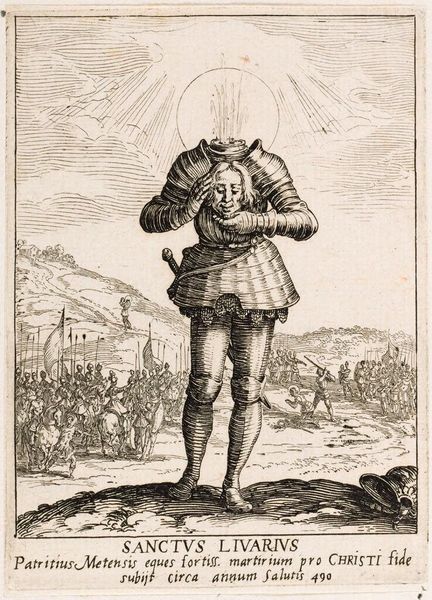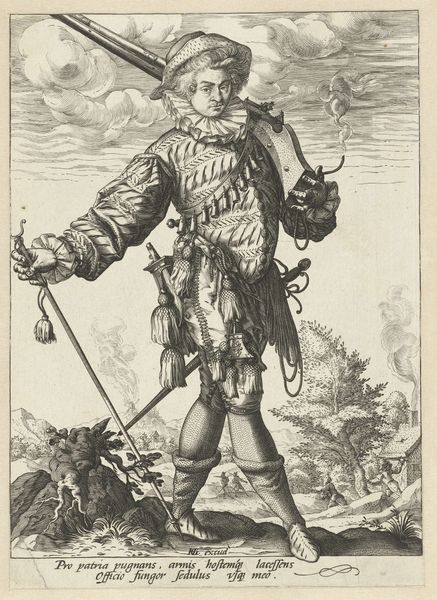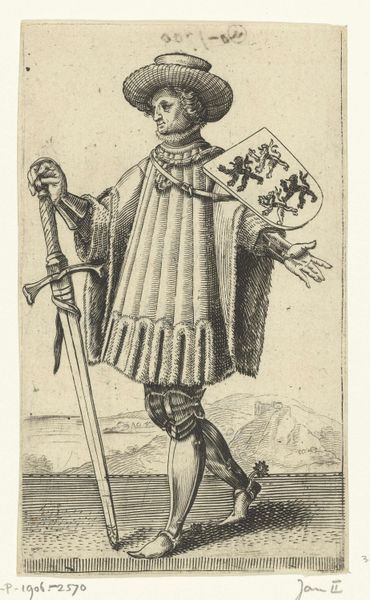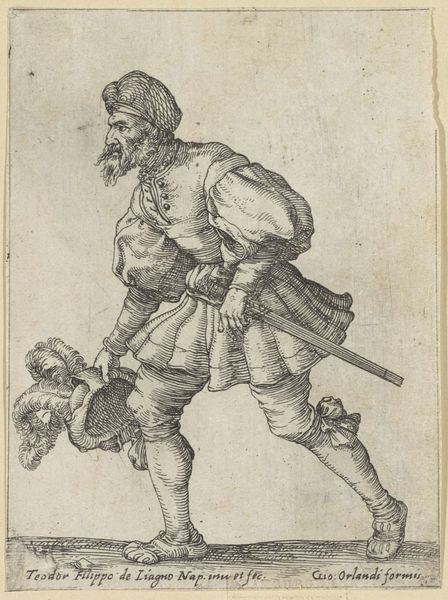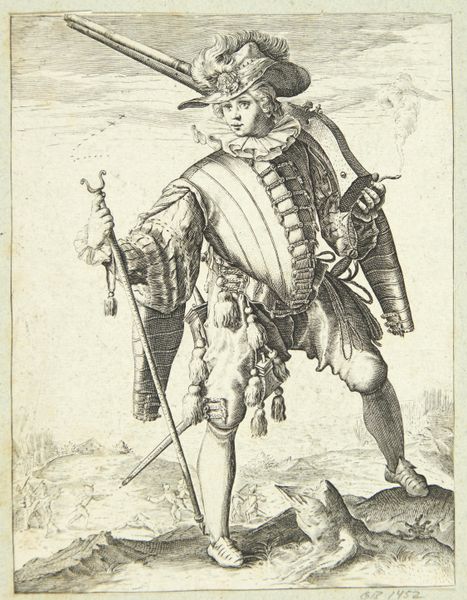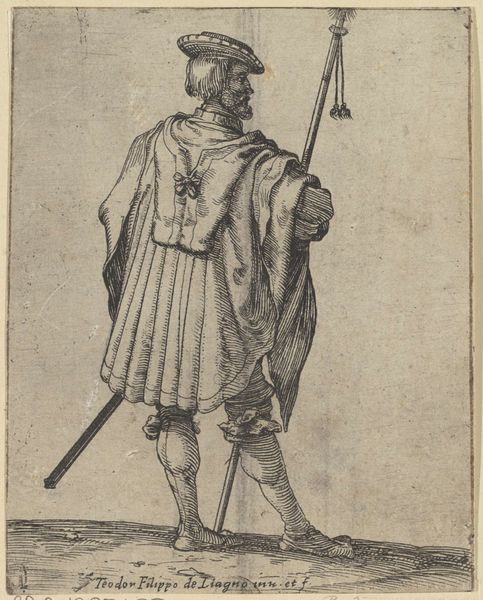
print, engraving
#
portrait
#
baroque
# print
#
landscape
#
figuration
#
history-painting
#
engraving
Dimensions: height 310 mm, width 230 mm
Copyright: Rijks Museum: Open Domain
Curator: This engraving, "Legeraanvoerder met lans voor een belegerde stad" from 1590, by Bartholomeus Willemsz. Dolendo, caught my eye in the Rijksmuseum's collection. There's almost a surreal quality to it, how the leader looms so large over the landscape. What do you make of it? Editor: It's definitely striking! The contrast between the detailed figure and the rather simple rendering of the landscape creates a real sense of scale. The figure seems to be printed almost like a poster or commodity of some kind... the leader is centered but the material process for sharing images has an effect here. What's your perspective on how the piece might reflect the socio-economic context of its creation? Curator: Exactly! It’s vital to consider how printmaking shifted art from singular objects to reproducible commodities. This engraving would have been made through laborious processes of cutting into a metal plate, a significant investment. The circulation of these prints played a key role in shaping perceptions of leadership and power, perhaps even fueled emerging national identities. What does the leader’s attire say to you? Editor: His attire suggests wealth and authority but looks impractical for actual combat, highlighting more symbolic power than actual war expertise, given that he is in a position above and overlooking those actively warring! Curator: Precisely. Notice the texture rendered in his sleeves and the delicate ruff – all crafted through skilled labor. How does focusing on the materiality, the labour behind the work, change your reading? Editor: Thinking about it as a commodity that could circulate changes everything. The process isn't just about aesthetics; it's tied to economic power and control over image dissemination and also in spreading an ideal. I had focused mainly on the look of the leader himself initially. Curator: Seeing art through a materialist lens like this brings valuable nuance, I think. We see this piece not only as representation but also evidence of the culture industry being built. Editor: Yes, and understanding the printing process opens up insights into both artistic technique and the larger historical and economic context that produced it. It reveals the means behind manufacturing fame.
Comments
No comments
Be the first to comment and join the conversation on the ultimate creative platform.
